There is no one-size-fits-all answer to social media marketing. What works for baby boomers may not work for millennials, and vice versa. Understanding different target audiences is crucial for any business or individual trying to communicate a message. By segmenting our target audience by age, we can begin to understand how each generation uses social media platforms, and compare and contrast.
In order to successfully engage their target audiences, businesses need to understand the different social media platforms and how each generation uses them. In this blog post, we discuss social media marketing for baby boomers, millennials and Gen Zers and see how these strategies were applied by BDSA when creating content for Young NTUC.
Understanding the different generations
Baby boomers are the last generation to remember life before social media. For them, social media is a way to stay connected with the world and to find information. They use it for both personal and professional purposes. Millennials, born between 1981 and 1996, and aged 26 to 41, are the first generation to grow up with social media. For them, social media is a way to stay connected with friends and family. They use it to share news and experiences, and to stay up-to-date on current events.
Generation Z, born between 1997 and 2012, aged 10 to 25, is the first generation to be born into a world where social media exists. For them, social media is a way to connect with the world. They use it to find information and to express themselves.
Case study: Young NTUC
Young NTUC is the youth wing of the National Trades Union Congress (NTUC). It provides youth with an avenue to connect and a platform through which they can bond over shared interests, whether that’s animal welfare or performing arts. BDSA, social media marketing agency based in Signapore, worked with Young NTUC to create a social media strategy to push out content that speaks to its target audiences. This was done through its Facebook, Instagram, LinkedIn and Tik Tok platforms. With a well-thought out content pillar strategy, methodical ad testing and content adapted to different platforms, BDSA helped Young NTUC get a step closer to its conversion goals.
BDSA’s social media marketing strategies
1. Carefully curated content
BDSA first sought to understand Young NTUC’s brand strategy and that starts with understanding its mission, vision and values. By having this in place, all social media posts were created such that it had consistent messaging which allowed target audiences to have a clear understanding of the organisations’s objectives. A well thought-out brand strategy also acts as a great starting point to creating a brand’s personality, from which a brand voice and a visual identity can take form. Young NTUC aims “to be the largest and most vibrant youth movement in Singapore, with youths who are active in a purposeful way,” and content is created so that its highly relevant to youth. Some examples of social post themes include careers, mental health, life skills and budgeting and finances.
2. Methodical ad strategy
When it comes to social media ad tactics, making assumptions about what works and what doesn’t can sometimes be detrimental. Young NTUC hoped to run an ad campaign on social media to have people sign up to become mentors as part of their career mentorship programme. Naturally, using LinkedIn as the primary platform to run ads felt like the fitting choice for a career mentorship programme.
However, after running the career mentorship ad on both LinkedIn and Facebook, the latter was found to be the more effective and economical choice. LinkedIn’s cost per action was 500% more than that of Facebook, while yielding only a tenth in number of leads generated as compared to Facebook. BDSA’s methodical ad testing approach ensures brands are getting the most out of their ad budgets.
3. Content adaptation strategy
The different social media platforms also cater to different demographics. According to Statista, nearly 60% of LinkedIn users worldwide fall within the 25 to 34 years age bracket. If brands want to engage audiences within this demographic, it only makes sense to put out content on this platform. As for those aged 13 to 24, almost 40% are found on Instagram. Brands therefore have to adapt content to suit the platform and cater to a specific demographic. The visual artwork for Young NTUC’s posts created for LinkedIn were made to be professional. While that posted on Instagram were adapted to be lighthearted and entertaining, while retaining the copy.
Learn more about BDSA’s social media marketing services
Segmenting audiences by age can prove to be an effective way to communicate and engage with target audiences of different generations who have different life experiences. If you’re interested in finding out more about how BDSA can help your brand understand its target audiences and devise a strategy to reach out to them, like it has with Young NTUC, reach out to us. We offer social media marketing services to companies in Singapore along with assistance in applying for EDG’s SME marketing grants.
Start a conversation with us now.




